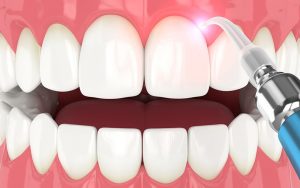Periodontal or gum disease is the second most prevalent dental problem after tooth decay. It leads to progressive destruction of the supporting structures anchoring the tooth, such as the gum and the underlying jawbone. This greatly impacts your overall oral health and facial aesthetics.
Advanced dental care in Grand Haven provides comprehensive treatment for periodontal disease depending on the stage and severity of the disease. This enhances your oral form, function, and aesthetics, boosting your confidence.
A comprehensive guide to periodontal disease
Periodontal disease, popularly known as gum disease is a progressive destruction of the periodontium that comprises the cementum, gums, periodontal ligament, and the alveolar bone. It typically begins as an infection and inflammation of the gum tissues, and when left untreated it can progress to the underlying jawbone. Over a while, the disease can be so aggressive that it can lead to mobility and tooth loss.
Bacteria and plaque are the prime suspects behind gum disease. The bacteria secrete harmful toxins and acids that cause infection and impair the body’s defense system.
Warning signs for periodontal or gum disease include:
- Red or purplish gums
- Gums that bleed easily
- Swollen tender gums
- Gum recession
- Halitosis (bad breath)
- Gaps or spaces between your teeth
- Pus draining abscess
- Malocclusion
Effective treatment modalities for periodontal disease
Your dentist will determine an appropriate treatment plan based on the severity of the symptoms. You may be recommended any one of the following:
Mild to moderate disease
Non-surgical
- Antibiotics
- These are prescribed in the form of oral pills or topical gels to fight infection
- Scaling and root planing
- These are routine procedures that allow the dentist to eliminate plaque, calculus, and bacteria beneath the gum line (subgingivally).
Moderate to severe disease
Surgical
- Flap surgery
- A flap incision is raised on your gums to access the tooth roots and clean them thoroughly.
- Bone grafting
- This is an effective procedure to counteract bone loss by replacing the lost tissue with a graft material.
- Gum grafting
- Gum grafting helps treat gum recession by placing a tissue graft around the affected teeth and suturing it.
- Guided tissue regeneration
- A special biocompatible material is placed between the bone and your tooth for the regeneration of the diseased bone tissues.
- Platelet-rich plasma (PRP)
- PRP is extracted from your blood sample and injected into the deficient areas to encourage bone growth.
Takeaway
Periodontal disease is a common dental condition, and it is essential to identify the warning signs and know when to seek dental care. Though you may not be able to reverse periodontal disease completely, you can still manage the condition with proper care and maintenance. 




